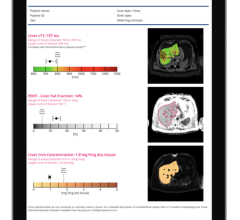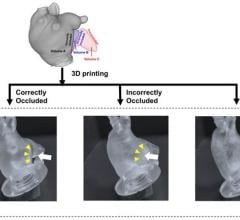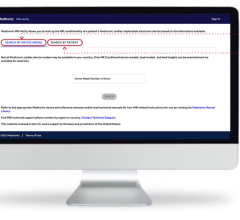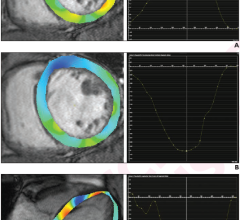February 27, 2014 — A new imaging technique for measuring blood flow in the heart and vessels can diagnose bicuspid aortic valve, and may lead to better prediction of complications.
A Northwestern Medicine team reported the finding in the journal Circulation. In the study, the authors demonstrated for the first time a previously unknown relationship between heart valve abnormalities, blood flow changes in the heart and aortic disease. They showed that blood flow changes were driven by specific types of abnormal aortic valves, and they were able to directly associate blood flow patterns with aortic diseases.
"Blood flow in patients with bicuspid aortic valves was significantly different compared to that in patients with normal valves," said senior author Michael Markl, associate professor of radiology at Northwestern University Feinberg School of Medicine. "We now have direct evidence that bicuspid valves induce changes in blood flow and that the type of flow abnormality may contribute to the development of different expressions of heart disease in these patients."
Bicuspid aortic valve is a heart condition in which the aortic valve only has two leaflets, instead of the normal three. It affects approximately one to two of every 100 Americans and is the most common congenital cardiovascular abnormality. Despite the absence of symptoms, the condition can lead to significant and potentially life-threatening complications, including aneurysm and rupture. However, it is not known which patients are at the highest risk for complications and whether the condition's origin is genetic or related to changes in blood flow.
The 4-D flow magnetic resonance imaging (MRI) used in the study has the potential for better predictive ability.
"The study demonstrated that new imaging techniques may help to determine patient-specific changes in blood flow to better understand which regional areas of the aorta are most prone to developing disease," Markl said. "In addition, the knowledge of abnormal blood flow patterns could be important to better identify patients at risk for the development of heart disease."
Markl's team was surprised to see such a clear distinction between individual expressions of aortic complications for different types of congenital valve disease. While the current findings show evidence of this link, long-term observational studies are needed to better understand the potential of 4-D flow MRI to improve disease prediction ability.
A longitudinal follow-up study in patients with bicuspid aortic valves is currently underway at Northwestern.
"Ultimately, we hope that this imaging technique will facilitate early identification of high-risk blood flow patterns associated with progressive aortic enlargement, improving the allocation of health care resources in caring for patients with this prevalent condition," Markl said.
For more information: www.northwestern.edu


 February 21, 2024
February 21, 2024 







